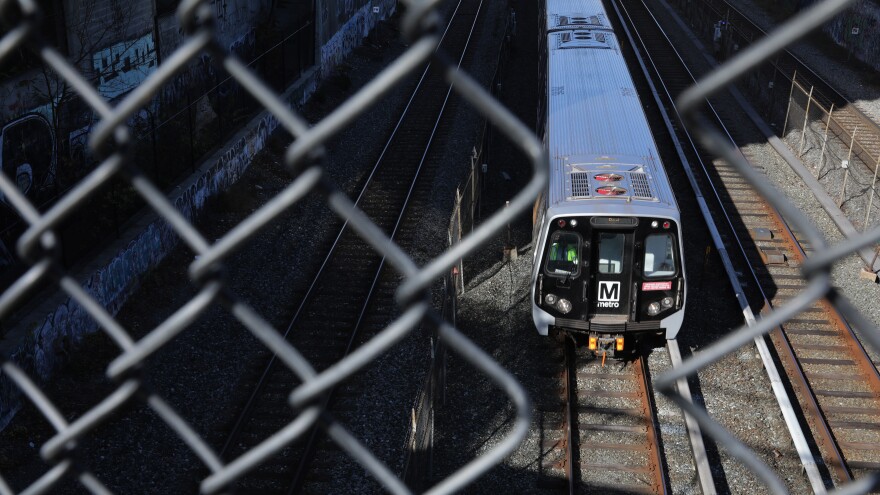WASHINGTON — In the nation's capital, Metro trains are filling up again as federal workers come back to the office a few days a week.
But if you ask those riders, they will tell you the trains are less full than they used to be.
"It's not as crowded as it was before, pre-pandemic," said Gina Adu of Bowie, Md., while waiting for a train at the L'Enfant Plaza station. Damien Doyle of Cheverly, Md. agrees. "This is about it now — maybe the new normal," Doyle said.
The new normal is ridership that's back to about 80% of what it was before the pandemic nationwide — though it's not distributed the same way. Public transit systems are seeing higher volume in the middle of the week. But rush hour peaks are smaller, with more trips at other times of the day and evening.
"We've seen that the normal workweek has changed fundamentally," said Robert Puentes, president of the non-profit Eno Center for Transportation in Washington, and a regular Metro commuter.
The rise of remote work since the pandemic is changing the way Americans commute. And that's prompting a crisis for big public transit systems, which were mostly designed to get lots of commuters downtown all at once, and are now scrambling to adjust to this new reality.
Congress spent tens of billions of dollars to get these agencies through the pandemic. But that money is set to run out next year.
Now a combination of ridership declines and inflation has left some major transit agencies with massive budget deficits — including systems in Chicago, San Francisco, Los Angeles and Philadelphia.

"The irony with transit is, for years the ones that were generating most of their revenue through passenger fares were the ones that were deemed to be the most successful," Puentes said. "But those agencies are having a more difficult financial challenge because they relied on those passenger fares."
The Washington Metropolitan Area Transit Authority, which runs the Metro system, is projecting a deficit of $750 million next year. General manager Randy Clarke says WMATA is weighing some deep cuts to service.
"If we do that, you're talking, draconian. Like service, as we know it does not exist," Clarke said in an interview. "Which then leads to less revenue for the system... Which then leads to more cuts, more cuts. And the whole thing falls apart."
That's known in the industry as a "death spiral." But Clarke is hopeful that Metro will find the money to avoid that catastrophic scenario — and he's not the only one who's optimistic.
"There is a bit of a doom cloud that is hard to ignore, but I think things are better than we think," said Lindiwe Rennert, a researcher at the non-profit Urban Institute who co-authored a new report on how public transit agencies can overcome the financial challenges they're facing.
Transit systems that have a stable funding stream, often from local sales taxes, are doing better, Rennert says. And she argues there's a strong case for that kind of funding, because mass transit benefits everybody — even if you never use it.
"The more other folks take the train, take the bus, the fewer cars are in your way as a driver. And that is simply a fact," Rennert said.

Rennert notes that bus ridership is roughly back to where it was before the pandemic. And that the most nimble transit agencies — in systems in Richmond and Cincinnati and Tucson — have more riders now than before.
So does the light rail system in the Seattle area.
"We expanded the service. We're reaching more people in more places. And so therefore, we have more riders," said Julie Timm, the CEO of Sound Transit, one of the few rail systems in the country that's seen a jump in ridership since 2019.
In fact, Sound Transit set ridership records over the summer when Seattle hosted Major League Baseball's All-Star Game, and a stop on the Taylor Swift tour.
"What I think we're seeing as a victory here in Seattle [is] a virtuous cycle of you put the funding in, you keep a reliable service and you see people use the service," Timm said. "When they have those good experiences riding, they come back, they ride again."
Copyright 2023 NPR. To see more, visit https://www.npr.org.




